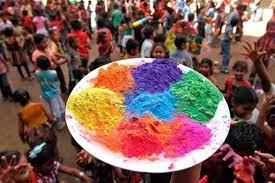Holi celebrates and hails the victory of good over evil. There are various legends and beliefs related to the festival’s origin.
New Delhi: The much-awaited and widely celebrated festival of colours – Holi is knocking at the door. This year, the festival will be celebrated on March 18 pan India. A day prior to the festival, Holika Dahan puja is performed, which is also known by the name of Chhoti Holi at many places. Holika Dahan will be celebrated on March 17.
Holi celebrates and hails the victory of good over evil. There are various legends and beliefs related to the festival’s origin. From Lord Vishnu’s story of Narasimha avatar, Radha-Krishna’s tale of love to Kamadev and goddess Rati’s legend – different regions of the country suggest different beliefs.
Take a look at how Holi is celebrated across the country in different States:
Bihar: In Bihar, the day before Holi, the main festival, people light bonfires as an ode to the legend of Holika. The festival is called Phaguwa in the Bhojpuri dialect and the day preceding Holi is called Phalgun Poornima. As per tradition, people add cow dung cakes, wood from trees, grains from the new harvest to add to the bonfire.
The next day wet Holi is played in the morning/afternoon after which Holi Milan is performed. Here people visit each other’s houses and apply dry colours to each other’s faces.
Karnataka: Here the festival is again a two-day event with people collecting wood days before the festival and burning in on ‘Kamadahana’ night. Many households also prepare special delicacies on this day. In one part of the State called Sirsi, people perform a folk dance called ‘Bedara Vesha’ five days before the festival day.
Maharashtra: Holi festivities last for a week or so in Maharashtra. Firewood is collected by youngsters in the community and then ignited on the night of ‘Shimga’ in every neighbourhood. It is a ritual for every family to bring a meal and a dessert to the festivities, most people prepare Puran Poli on this day.
Telangana: Here, the festival of Holi is also known as Kamuni Punnami/Kama Purnima or Jajiri as it is associated with the legend of Kamadeva. It’s a long 10-day festival in the state and the last day is the main Holi festival. For the 9 days before the main festivities, children celebrated by singing folk songs, playing with Kolata sticks and collecting money, rice and wood.
West Bengal: In West Bengal, the festival of Holi is better known as ‘Dol Jatra’ or ‘Dol Purnima’ and is celebrated with people placing the icons of Radha and Krishna on a palanquin. It is then paraded around the neighbourhood and honoured. People dance and sing as they carry the godly icons to celebrate the festival.





































